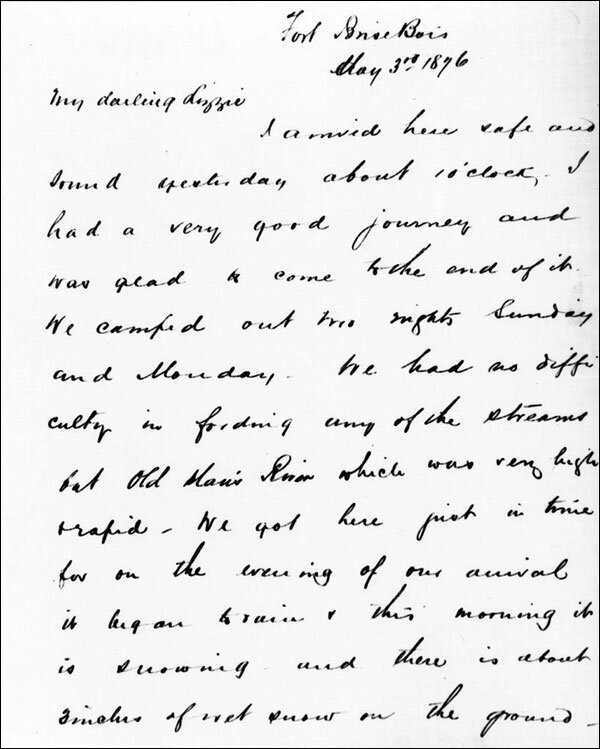Fort Calgary
A busy day at Fort Calgary.
In the spring of 1875, Assistant Commissioner Macleod sent Inspector Ephrem Brisebois northward to establish a new post. Well travelled trails from all directions converged on a ford of the Bow River, a perfect spot to build a fort and keep an eye on everyone's comings and goings! Brisebois chose a spot where the Elbow River joins the Bow.
The I.G. Baker Company was contracted to provide logs for the fort and to supply other goods. The men built the fort themselves:
Ready for inspection in the parade square.
"In trenches three feet deep we set upright 12-foot pine logs side by side to form the stockade and the outer walls of the buildings, which faced inward. The men's quarters were on one side of the square; store-room and shops opposite; on the north, stables for 50 horses; and on the south, officers' quarters and guard-room. The pole roofs were covered with earth and the log walls mudded with clay. The whole formed a square of 150 to 200 feet, with a gate at either end. At first, having no lumber, the floors were bare earth which when continually moistened became as hard as brick. Large stone fireplaces were built in all the rooms." Sir Cecil Denny
This letter was one of the few pieces of correspondence showing Fort Calgary as Fort Brisebois.
As winter set in, the men were happy to move out of their tents and into the Fort. They were not so happy when Brisebois took possession of their only iron cooking stove and moved it into his own quarters! Overdue pay, an insensitive commander and other complaints lowered morale and resulted in a letter of complaint to Macleod. When Macleod and Assistant Commissioner Irvine came to investigate, they quelled the mutiny. They also made a major change - the Inspector had begun calling the post Fort Brisebois. Disliked by his men and the local settlers, the name rankled. Macleod suggested a change to Fort Calgary, named for his family home in Scotland. The name, thought at the time to mean 'clear running water', was approved. By all except Inspector Brisebois, who, feeling insulted, resigned his commission shortly afterward. Inspector Denny took over as the commanding officer.
The fort changed in size over the years, responding to changes in the west. By 1882 it was slated to close but the focus of the NWMP was changing. Most Native people were settled on reserves and the police were becoming busier enforcing laws among the white population. The old fort was torn down in 1883 and new stables, a carriage shed, workshops, a storehouse and barracks were built. The men's barracks burned down in 1886 and was replaced with a larger, two storey buildling. In 1914, the land was sold to the Grand Trunk Railway - Calgary had its own city police force by then and the RNWMP presence was needed in rural areas.



